
It can be challenging for those who teach art, music, P.E., and other “specials” to maintain good communication with students’ classroom/homeroom teachers. In the spring, I published a post/podcast episode called 6 Ways to Prevent Your Students From Misbehaving for Other Teachers, which was designed to help classroom teachers bridge the communication gap.
Today I’ve invited a specialist teacher to share information from her perspective. Her name is Brittany Washburn, and she is a full time teacher as well as Teacher Author. She teaches science and technology specials for grades 2-5, seeing each class once per week for 45 minutes. Here’s what works (and what doesn’t) in her experience as a specials teacher.
Classroom management can be so tricky, especially for a new teacher. I know I struggle with wanting my classroom environment to be “special” while also keeping students serious and focused enough to cover some intense topics. I am fortunate to have supportive teammates, but 4 out of the 5 of us have been doing this less than 6 years. We had to put our heads together to come up with a plan that would work for all of us, and it is still evolving.
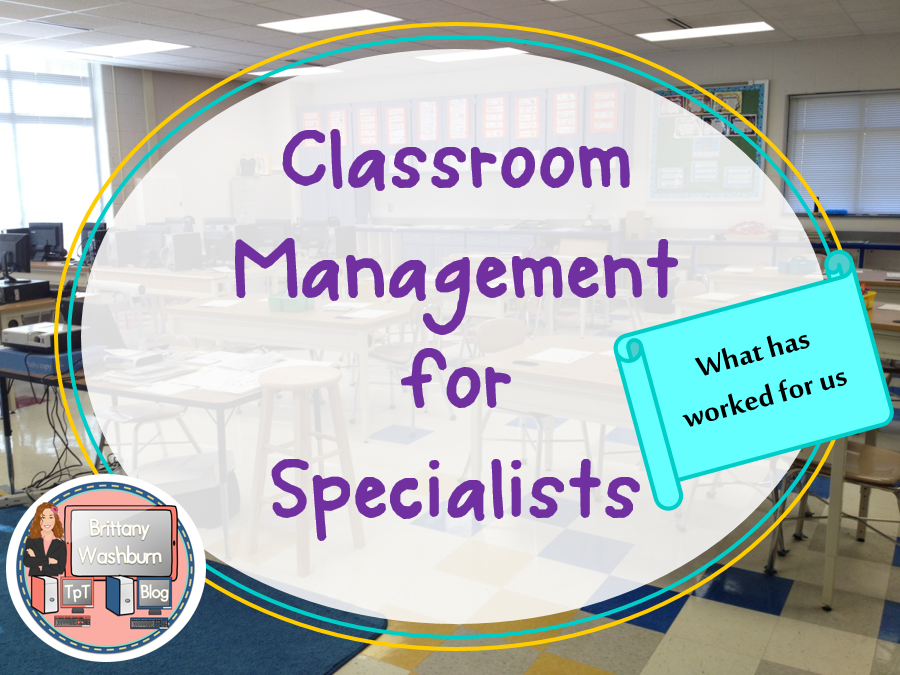
We really needed a way to communicate with the homeroom teachers. The time we have between classes is so limited, so we had to come up with something quick and meaningful. We decided to do a scoring system. On the board, each class starts with 5 points (we use the letters ROCKS, because our mascot is a “Rocker Man”- imagine a teenager with a guitar).
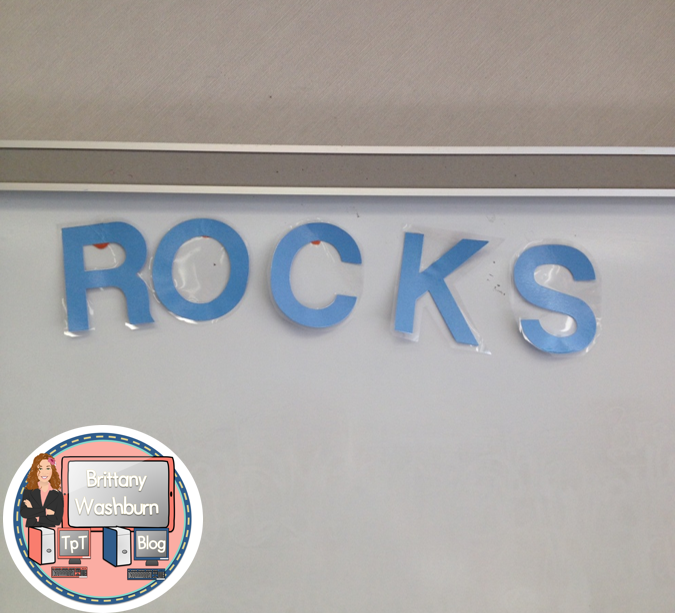
The only time a letter (and point) is taken away is for voice level infractions. Each specialist has a chart similar to this one hung in his/her classroom.
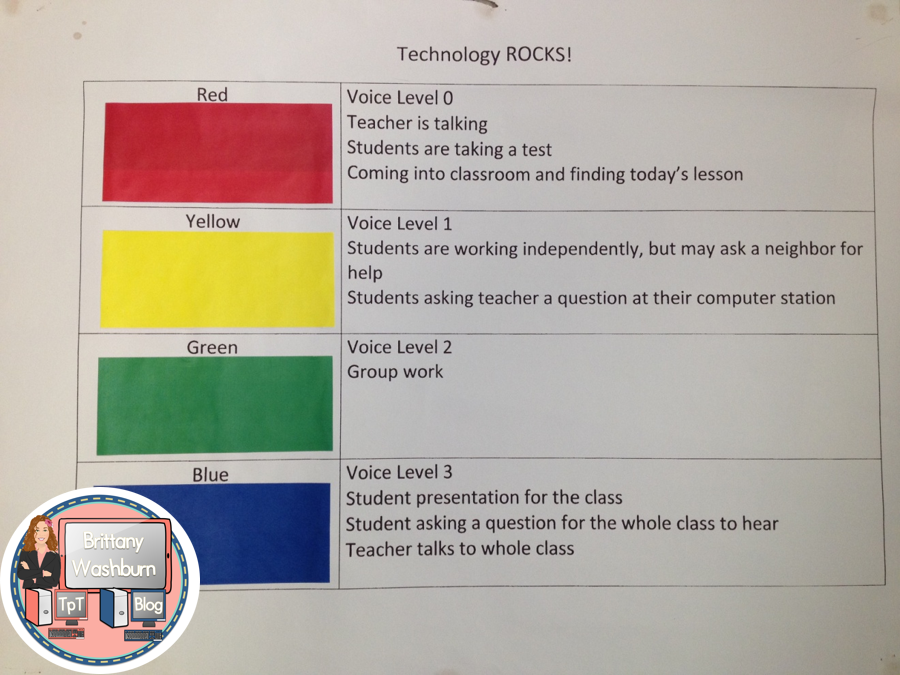
We work so hard at the beginning of each school year to make sure all students understand the expectations. We practice the different voice levels. Model what each sounds like, and practice some more. Since we only see each class once per week, it is important to go over the expectations again at the beginning of each class. In my room, I expect them to come in without talking. If there are more than 5ish students talking when they come in and sit down, I take a letter away. This is a whole class consequence, so if it is just one student then I address it with that one student.
Whenever I have to take away a letter I stop the entire class and talk about why they are losing a letter. I usually ask the class why they think they are losing a letter. I call on 2-3 students to answer. I always try to call on someone who was talking too loudly and someone who was doing the right thing. Many times I can get an apology out of a student who was not following expectations! Then I send them back to work understanding that if the talking continues then I will have no choice but to take another letter.
At the end of class, we look at how many letters we still have left. Each specialist has a cute little slip of paper with our symbol on it where we write the score.
I wait until the teacher has arrived to write the score. I have them line up following all expectations and leave the sheet blank until we can talk about what the score is and why they are getting it. I love it when we can do this with the teacher standing in the doorway. It helps her/him understand how class went without us having a separate conversation.
When I walk around the school, I see our score sheets hung on the classroom door (but only if its a 5). Many times when a teacher drops a class off, she/he will remind them that a 5 is expected (“Class, show me on your hand what score you are aiming for today,” and all the students hold up their hand showing a 5). If the teacher doesn’t do this at drop-off, I will ask them before they walk into my classroom. I like to remind them each week.

So what do we do if an individual student is causing the problem, or if the infraction has nothing to do with voice level? We have a “Think Sheet.”
Sometimes it is necessary to send a student out of the classroom (he or she is being disruptive, showing anger and needing a break, or came into class with something going on and just can’t get it together to focus on the lesson). We are so lucky to have the other specials classes in the same area of the school. I can send 3 students out at a time if needed, but I’ve never had to send more than 2. The Art, Music, and PE teachers are all on board with this method.
We take a minute to grab a Think Sheet and fill out the top (name of student, what student needs to do while out, how long I expect it to take). Depending on the student, sometimes I send them with a responsible buddy. Or, I send the student out and send another student over with the Think Sheet a minute later.
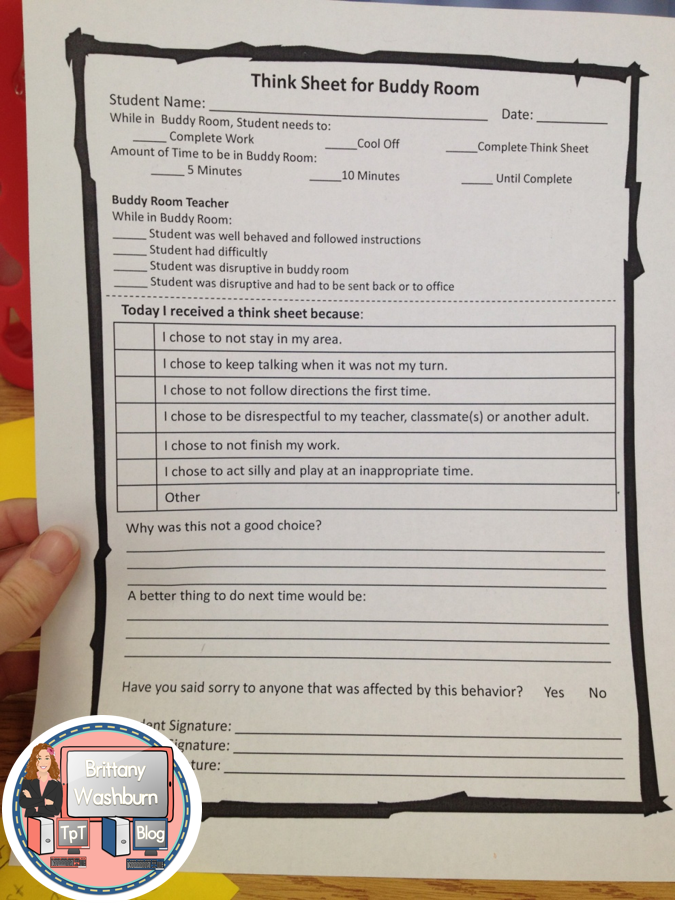
The bottom half of the sheet is to be filled out by the student. It starts with a simple checklist of what he/she did. Then some short-answer questions asking the student to reflect on his/her behavior. I expect the student to sign it. When the student finishes the Think Sheet, he/she can come back to class. Usually by the time the student comes back, the rest of the class is working and I can take a minute to talk with the student. I always let him/her know that their teacher and parents will be signing this form as well. Most students aren’t happy to hear this, but they need to take responsibility–especially when they interrupted the learning of their classmates.
Most teachers are happy to receive the Think Sheet and send it home to the parents, because they are seeing the same type of behaviors throughout the day. Having feedback from someone else is reassuring. I try to snap a photo of the Think Sheet before it leaves my classroom because they rarely make it back to me. I want to have the documentation.
Finally, I think it is so important to be open with students about what is expected of them academically each class. Since I teach Science and Technology, my “I Can Statements” display is packed. There is always at least one technology standard and one science standard addressed for each grade level.
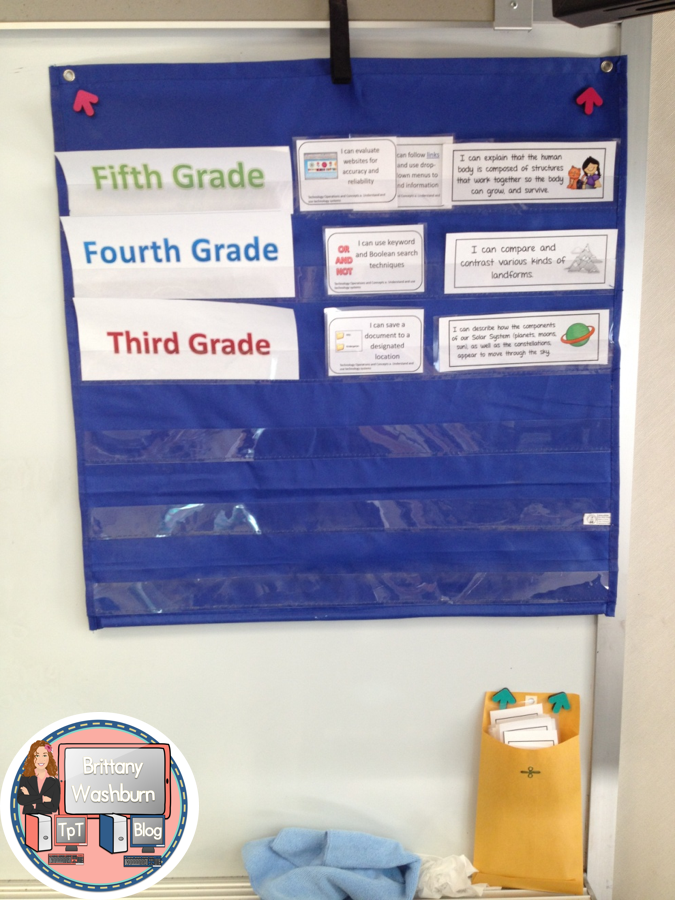
I start class with a warm up question and then tell them the standards we are working on that day. I can then use that I Can Statement as a guiding question during the lesson. In my experience, students are more engaged when they can see and understand what they are working toward. Most of the time during the last 5 minutes of class, I bring the students back together and let them share at their tables a specific question, or what they learned that day. I love to tell them to also choose one student who will be responsible for sharing what his/her table learned. Even if I don’t get around to letting every table share, by having them think they will have to share out (and usually I have time for 1 or 2 tables to share) they will take the conversation more seriously.
Hopefully this post will help you with some ideas for your own classroom. The main advice I can give is to have the same schedule every day (warm up questions, directions, independent work, group reflections, wrap up, etc.). I also keep them very busy. It is rare that everyone finishes the entire assignment. These 2 things have been the key to my successful Science and Technology program.

Angela Watson
Founder and Writer
Sign up to get new Truth for Teachers articles in your inbox
OR

Join our
community
of educators
If you are a teacher who is interested in contributing to the Truth for Teachers website, please click here for more information.















